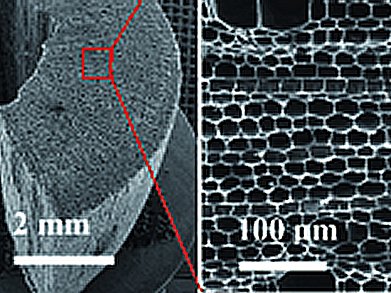Microbial fuel cells (MFCs) are electrochemical cells that use electroactive microorganisms, usually bacteria, to oxidize organic matter and generate electrical power. One major factor that limits performance involves the anode. The performance is decisively determined by the density of electrochemically active bacteria grown at the anode and their metabolic rate, and by the rate of electron transfer from the bacteria to the electrode.
Haoqing Hou, Jiangxi Normal University, Nanchang, China, and colleagues use a natural plant, kenaf (Hibiscus cannabinus; a crop plant) as raw material in the preparation of a macroporous carbon for high-performance MFC anodes. The ordered three-dimensional macroporous architecture of the kenaf stem was directly transformed into an ordered 3D carbon material, denoted as 3D-KSC, via a simple carbonization procedure.
The new material allows a high anodic current density. The 3D-KSC is based on a natural plant resource that is renewable and abundant. The direct carbonization provides a lowcost, environmentally friendly way for the preparation of porous carbon, which facilitates the large-scale application in microbial fuel cells. Moreover, the 3D-KSC may serve in other applications, such as electrodes in electrochemical cells, supports for catalysts, filters, or high-temperature chromatography columns.
- A Three-Dimensionally Ordered Macroporous Carbon Derived From a Natural Resource as Anode for Microbial Bioelectrochemical Systems,
Shuiliang Chen, Guanghua He, Xiaowu Hu, Mingyun Xie, Suqin Wang, Daojie Zeng, Haoqing Hou, Uwe Schrçder,
ChemSusChem 2012.
DOI: 10.1002/cssc.201100783



